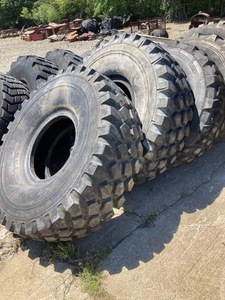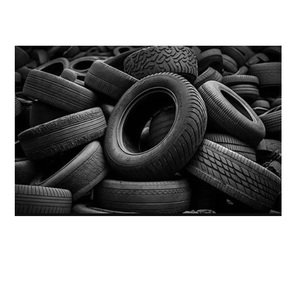
All categories
Featured selections
Trade Assurance
Buyer Central
Help Center
Get the app
Become a supplier

(187325 products available)










































Used tires are categorized based on their tread depth, which refers to the remaining depth of the tire’s tread pattern. The classification includes:
Another type of used tire is the retread tire. Retread tires are used tires that have undergone retreading to extend their lifespan. During retreading, a new tread is applied to the casing of a worn tire.
Used tire casings are tire shells with no tread. They are used to manufacture new tires through the retreading process. The quality of a used tire casing determines the quality of the retreaded tire. Ideal tire casings should have a uniform wear pattern and be free from damages.
Specification of used tires and tire casing:
Size
The size of a tire is important for ensuring proper fit and performance. Tire sizes are not only used in identifying the size of the tire, but they are also important in ensuring driving safety and accurate speedometer readings. The specification of a tire size is usually found on the sidewall of the tire. The width is measured in millimeters from sidewall to sidewall. The aspect ratio is the height of the sidewall, and the rim diameter is the size of the wheel that holds the tire. The load rating and speed rating are also specifications that are included in the tire size.
Tread depth
Tread depth is an important specification for tires since it affects traction, hydroplaning resistance, and tire mileage. Tread depth is measured from the bottom of the tire's grooves to the top of the tread ribs. It is an important specification since it helps in tracking tire wear and ensuring that the tire has sufficient tread for performance and safety.
Tread design
Different types of tread designs are suitable for different types of conditions. This includes the symmetric tread design, which has a uniform pattern on the tire's inner and outer sides, and the asymmetric tread design, which has a varying pattern on the inner and outer sides.
Tire construction
Tire construction involves the components and materials used in making the tire. Tire construction is important for determining the tire's performance and durability. The casing of a tire consists of steel belts, beads, and plies. The steel belts provide strength and puncture resistance. The beads hold the tire on the rim, and the plies are made of polyester or nylon, which provides strength and flexibility.
Maintaining tire casings is important for ensuring safety and improving the lifespan of the tire. Some of the ways in which used tire casings can be maintained are through proper tire inflation, regular tire rotation, and visual tire inspections.
Proper tire inflation
When tires are properly inflated, the pressure of the tires is equal to the manufacturer's specifications. This can be done by checking the tire pressure using a reliable gauge. The tire pressure is important for the performance and safety of the vehicle. Proper tire inflation helps in preventing used tires from becoming flat and uneven wear. This helps in extending the life of the tire. Overinflation of the tire can help in improving fuel efficiency, but it can also lead to a rough ride and overinfluence the tread, which can lead to tire failure.
Tire rotation
Tire rotation is important for ensuring the uniform wearing out of the tire. This involves changing the tires from one position to another. The front tires are usually moved to the rear and vice versa. This helps in increasing the traction of the tires and improving the performance of the vehicle. Tire rotation can be done by following the pattern recommended by the vehicle manufacturer.
Tire inspection
Regular tire inspection is important for ensuring the condition of the tire is maintained. This involves checking the tire for punctures, visible damage, and foreign objects. The tire pressure is also checked during visual inspection to see if it is properly inflated. The tread depth and tread design are also checked during visual inspection.
Opting for new tires can be quite costly, and this is why many people consider the option of used tires and casings. However, it is important to understand how to choose the right type and ensure that the quality is up to standard. Here are some of the factors to consider when choosing used tires:
Condition
The initial and most crucial aspect to assess when opting for pre-owned tires is their condition. One should thoroughly inspect the tires for any indications of deterioration, such as rips, punctures, or bulges. Moreover, it is essential to evaluate the tread depth; tires with a more profound tread are preferable as they provide superior traction and longevity.
Tread design
Different types of tread patterns are available on tires, and each is designed for specific road conditions. For instance, all-terrain tires are suitable for various surfaces, including highways and off-road environments. However, the latter might not perform optimally on wet roads. Therefore, it is important to consider the type of tire that suits the specific region's weather conditions and road types when selecting used tires.
Size
When selecting used tires, it is crucial to ensure that the dimensions correspond precisely to those of the vehicle. Tires with incorrect dimensions might adversely affect the car's performance and handling. Furthermore, they might even pose a safety hazard. Consult the owner's manual or the placard located at the door jamb to ascertain the correct tire size.
Brand
When choosing used tires, it is advisable to stick with well-known brands that are already familiar. Reputable brands usually provide superior quality and durability compared to unknown or generic brands. Furthermore, well-known brands frequently have accessible aftermarket support and warranty offerings.
Dealer reputation
The reputation of the dealer or retailer from whom the tires are purchased is equally crucial. Selecting a trustworthy and reputable seller guarantees that the tires have undergone appropriate inspection and testing. Moreover, numerous sellers provide some form of warranty or assurance for used tires.
Some checks to carry out before replacing a tire include the following:
On Alibaba.com, most tire suppliers offer DIY replacement kits that include all the necessary tools for replacing tires. This includes the following:
To replace the tire, follow these steps:
Q1: Are new tires better than second tires?
A1: Users might opt for either new or second-hand tires depending on their budget and needs. New tires, however, are believed to offer better value in the long run because they are durable and have a longer tread life.
Q2: What are the advantages of used tires?
A2: Used tires have fewer environmental impacts compared to their new counterparts, which are harvested from natural resources. They are also budget-friendly and provide adequate tread depth.
Q3: Why do people avoid using tires?
A3: Some people have negative perceptions about used tires. They believe that the tires might be damaged and therefore, cannot offer proper service. There is also a misconception that used tires have lower tread depths, although this is not always the case.